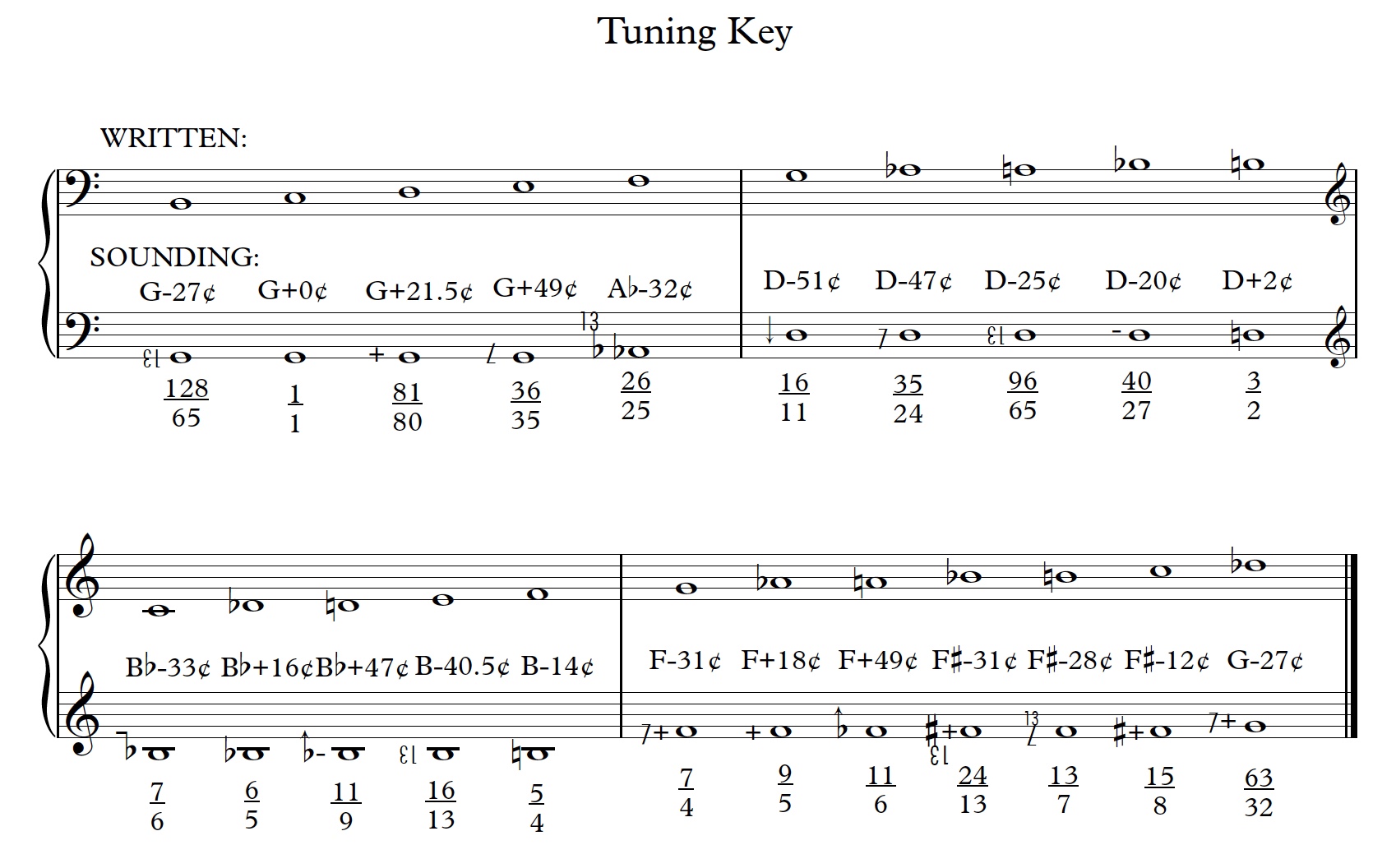For many years I wanted to try my hand at a drone piece, using only slight deviations in tuning to navigate smoothly between extreme consonance and extreme dissonance and embodying the musical interest in resulting unpredictable waves of beats. Conceptual and technical difficulties prevented me from finishing anything until 2022, when the idea and the technology suddenly came together. The piece requires quasi-infinite drones triggered via MIDI, rich enough in overtones to elicit beats but not so rich that the entire texture turns to noise. There are a lot of great electronic pieces made from the interference of sound waves, but I always feel a need to express the human element in my music, and so it was important to me to have the waves emerging from and obscuring familiar chords: minor, major, and dominant sevenths, however mistuned. I am open to different varieties of timbre in which the piece could be manifested, but what worked for me initially was a quartet of virtual (software-simulated) Ondes martenots. Perhaps an electronic organ sound would work as well, but more a small Baroque organ rather than a pipe organ, as long as waves of beats intermittently move into the foreground above the notated harmonies. Some will find this a radical departure from my usual style, but I've written conventionally tuned pieces that change from chord to chord one note at a time (including "Pluto" from The Planets and But Even So), and I used similarly beating dissonant just-intonation chords at the end of the battle scene from Custer and Sitting Bull, so this is more a distillation of earlier techniques I've used.
The piece lasts roughly 18 minutes, depending on the rubato applied by the performer, and is dedicated to that master of drone music Dave Seidel. The pitches below are given in Ben Johnston's microtonal pitch notation as well as by cents and ratios to G 1/1.

Kyle Gann
Return to Index of Compositions
